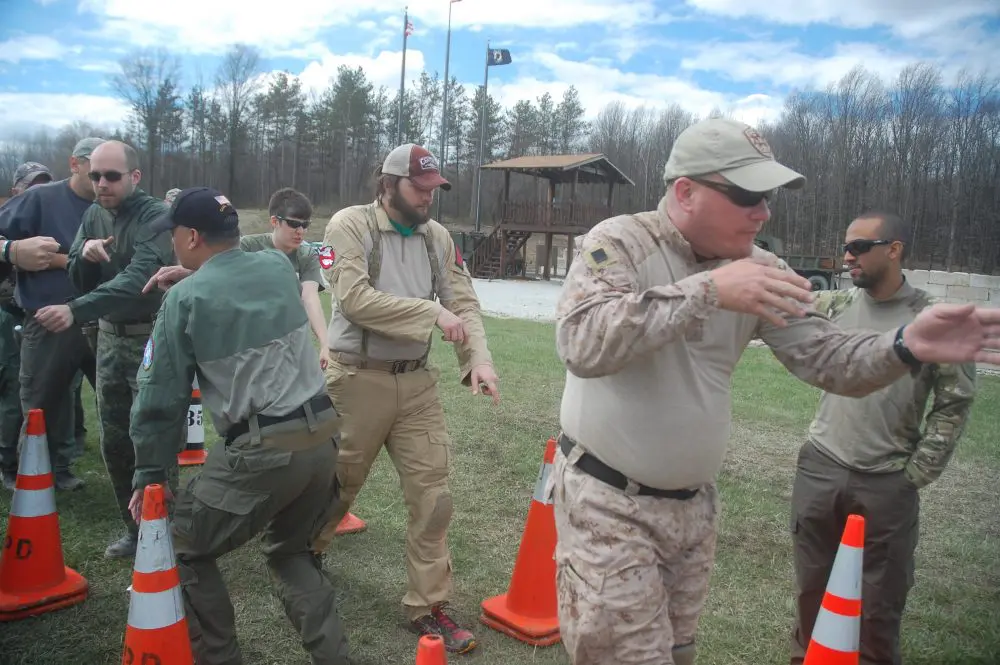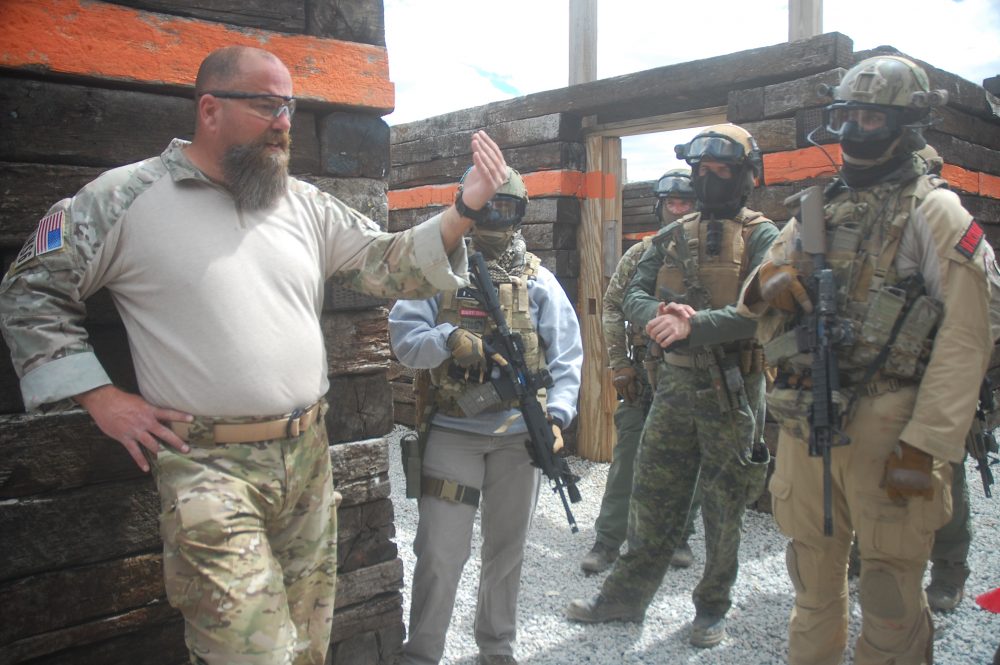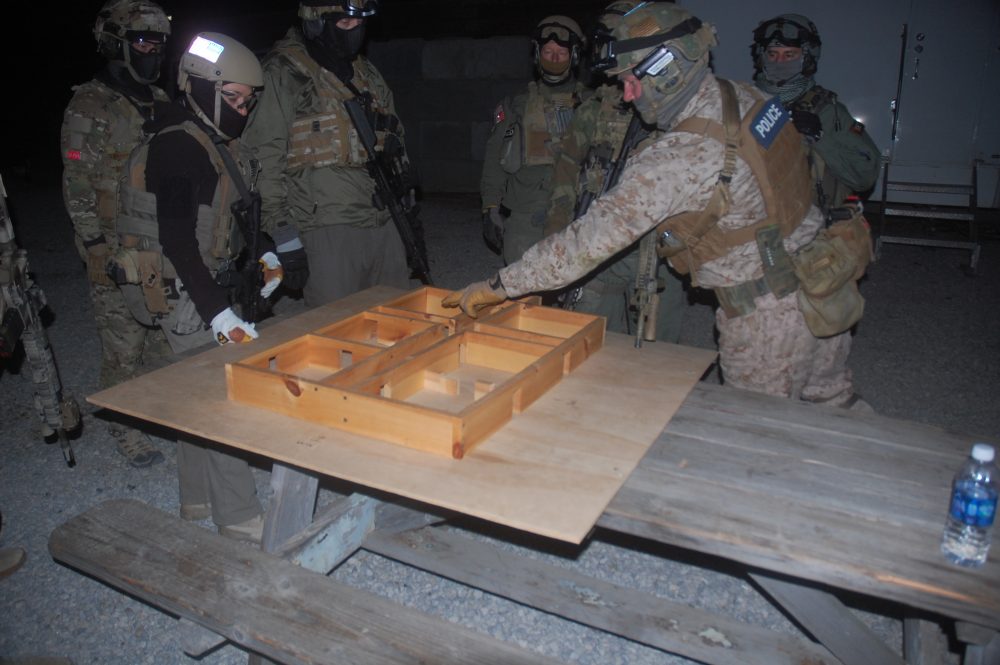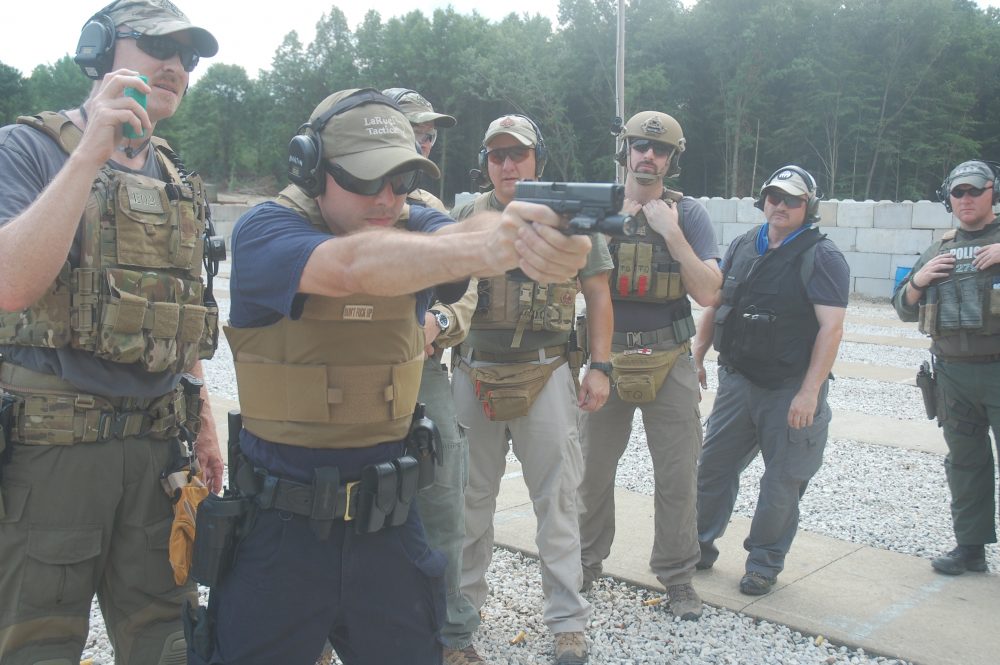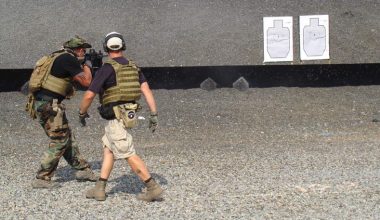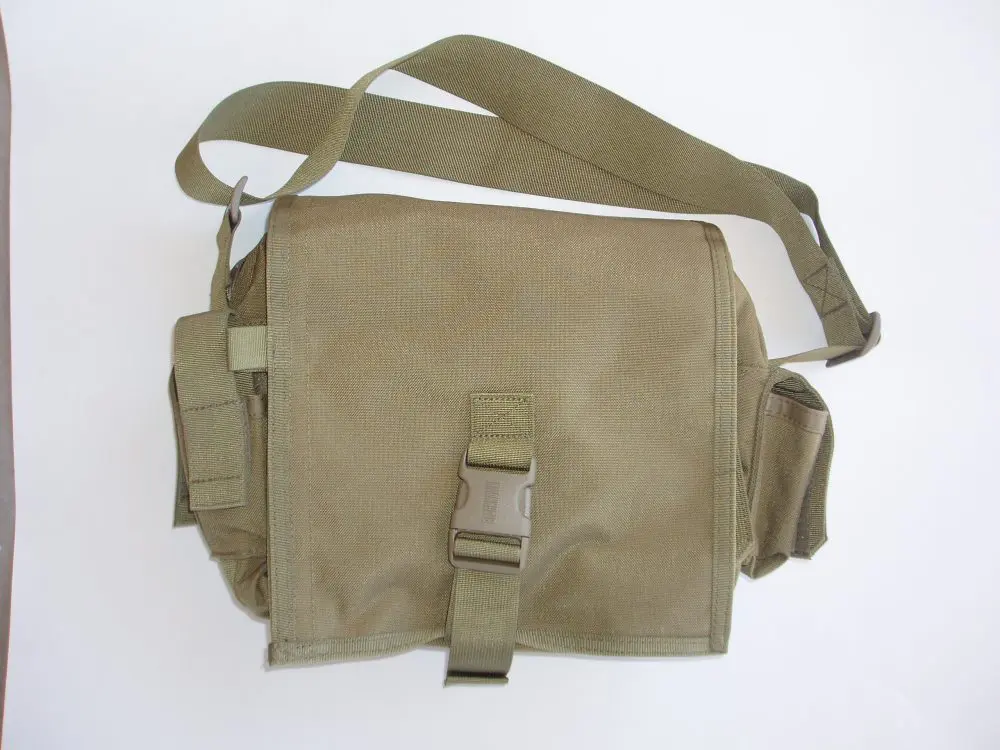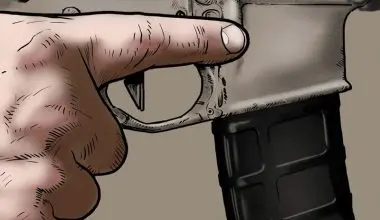Instructors and students alike understand that we all learn in different ways. As an instructor, I’m always intrigued when I’m initially unsuccessful at improving a student’s performance but a fellow instructor is able to intervene and make the light bulb come on for the student with an analogy, demonstration, or a subtle observation or suggestion I’ve failed to make. It’s one of the advantages and rewards of working with a team of professionals.
In every class, I learn as much about how to increase a student’s skill and knowledge as I hope the students learn from me. In advanced tactics courses, we frequently use lectures, demonstrations, catwalk observation, dry-runs, and white-board diagramming to try to instill the basic principles in as many different ways as possible. It increases the effectiveness and efficiency of learning for the greatest number of students, and helps the students establish good habits early, before scars develop caused by the repetition of poor technique.
However, again and again, whatever the particular course material, a certain student will display a certain kind of obstacle to good performance that has its roots much deeper than a simple failure to employ the correct TTP or shooting skill. I’ve talked about this obstacle selectively in courses where I thought it germane and appropriate for the class, and have been encouraged to share more of my thoughts on the subject. The obstacle is your own mind. I’m not ashamed to use myself as an example.
EAG Tactical Instructor John Chapman reviews team’s actions in the house during force-on-force training. Mistakes should be learned from but not obsessed over. Instead, form a positive image of how the correct action should be performed the next time, and mentally repeat that image. A more successful result is likely to be produced in this manner.
Table of Contents
EARLY FAILURES
As a kid, I looked forward to shooting more than just about anything else. But one experience stuck with me for years and influenced how I was to shoot far into the future. I was with my Dad and a group of his friends. He was usually very proud of how well I shot and liked to show off my skill in front of other adults, whom I could generally out-shoot. To say that good shooting was a valued skill in my household would be a colossal understatement.
One day, I was not performing well. The sights were difficult to see, my arms shook, and my trigger control was poor. I was not performing up to my Dad’s expectations. As his criticism became stronger, my shooting became worse. Needless to say, it was a quiet ride home.
The next time we went shooting, I remembered how poor my last performance had been. All the way to the range, I imagined the embarrassment I’d feel if I shot poorly again. I thought about the sights being blurry and about jerking the trigger. I thought about seeing holes outside the black on the target. I imagined my Dad’s reaction.
I did not turn in a stellar performance that day. Nor did I shoot well the next time. While today, we all recognize that as a self-fulfilling prophecy, my nine-year-old self did not.
Eventually I got out of the rut. I don’t know how I did it. I must have at some level begun to enjoy our outings again, and recommitted myself to the act of shooting instead of worrying about the results.
I’m glad I did, but I sure didn’t have my dad to thank for any guidance that helped improve my shooting. Given what we know about sports psychology today, it’s a wonder I like shooting at all!
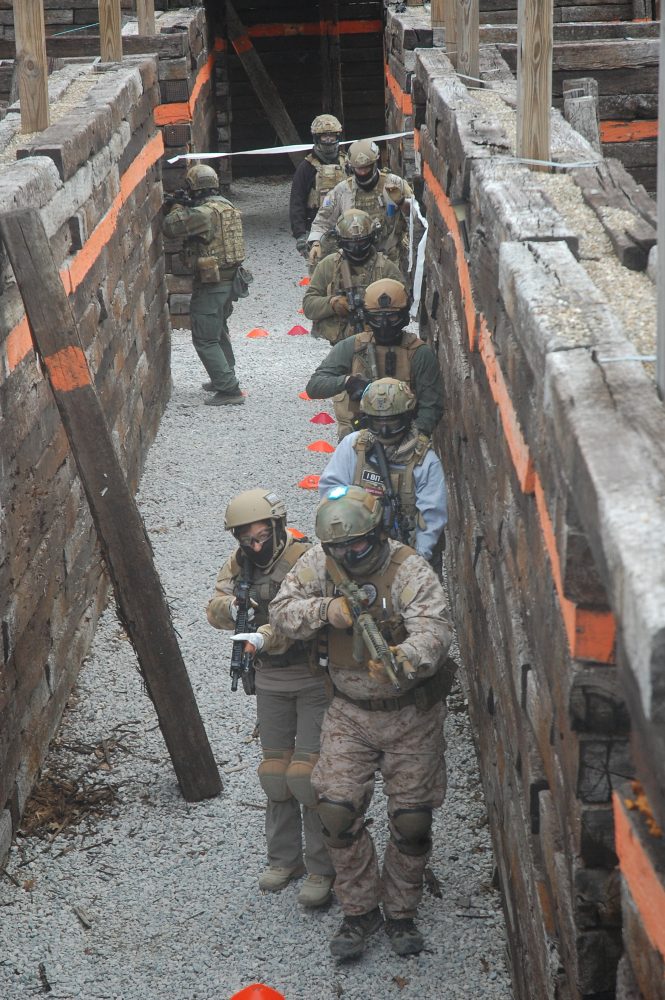
SEEDS OF INSIGHT
I spent a little more than a decade actively studying traditional Japanese martial arts. More important than any specific skill or self-defense ability, I learned an appreciation for the body of work produced by Asian warriors and philosophers who, over hundreds of years, analyzed and revealed how one becomes a better person through discipline.
One of those themes was the observation that, by learning one thing well, a person can come to learn many things. A person who mastered swordsmanship was frequently able to master other disciplines quickly. Whether in fields as disparate as art or business, or simply in cultivating a life with better balance and focus, these warriors demonstrated a deep understanding of self-mastery or “learning how to learn.”
Have you ever known someone who seemed to be naturally good at everything they did? Who seemed to pick up new skills very easily? Most of the time, such a person is using experience learned from succeeding in one endeavor and transferring the knowledge they acquired in achieving that success to the new field. Some do that without any formal training or apparent effort. Most of us do not. The fear of failure may keep us from even trying new things. Within this dichotomy are the seeds of how we mentally prepare to succeed or fail, in shooting or almost any pursuit.
Beyond developing the mechanical skills and physical ability to execute movements or techniques, the ability to cultivate the mindset that lets us do these things correctly is a necessary part of any training, especially firearms training.
It has been said that shooting is mostly mental. While I basically agree with that statement, it is still useful to understand why it’s true and what skills we’ve learned from other performance-on-demand disciplines that can serve to make us better shooters. Perhaps equally important is the understanding of why a bad performance can be explained by deficiencies in our mental processes, and how we can identify and correct those tendencies when they appear.
Sand tables, dioramas or mock-ups allow improved visualization of any plan and are useful for individual actions as well as those involving teams. The mind can accept imagined experience for actual experience the more realistic the visualization is pictured mentally.
PSYCHOLOGY VS. PHILOSOPHY
Mental preparedness and conditioning are important for any type of performance. This can be especially true in disciplines requiring solely individual execution: activities like running, golf, and especially shooting. Athletes of all types frequently undergo training in sports psychology to better learn ways to focus their mental energies in order to improve their performance.
For some of us, the term “psychology” has a touchy-feely connotation that can be a stumbling block to acceptance. Eastern philosophy and traditional martial arts training that emphasize cultivation of the state of mind Buddhists describe as “no-mind” has even more alienating roots for many of us. These obstacles can make the concepts seem unapproachable. But fortunately, these concepts can be explained in simple, useful terms.
In Zen Buddhism, practitioners seek to develop a state of “no-mind” (“Mushin” in Japanese). This means learning a way of cultivating a mind free from anger, fear or ego, which are considered sources of distraction. They interfere with clear thinking and optimal performance. In Samurai culture, there was a strong link between the study of Zen and martial discipline. The development of a clear mind, through both relentless physical practice and mental training to clear the mind of distractions, led to better performance.
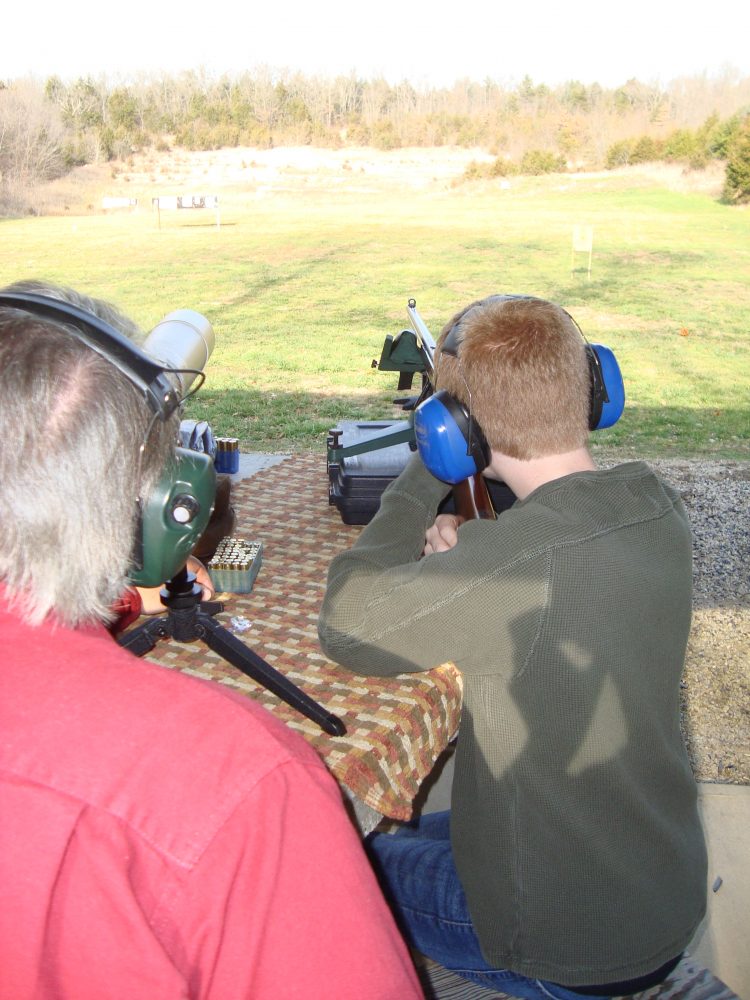
For example, Japanese archery (kyudo) is a martial discipline that emphasizes hitting small targets at great distances with bow and arrow as a way of cultivating the mind. Practitioners dress in traditional garb and use the Japanese long bow to shoot, essentially without any aiming technology, at distances that would be difficult to hit with a modern compound bow and complex optical sights. Beyond strength or physical skill, practitioners of kyudo work at cultivating a mindset that allows them to achieve an extremely high level of performance.
If the mind is cluttered, unfocused or distracted, is the expected result good or bad shooting? Sound familiar? This aspect of shooting has been described by masters of kyudo as the understanding of the connectedness between you and the target (and also the universe). It doesn’t get much more esoteric than that! However, you don’t have to drink the kool-aid to appreciate that the principle described is that if you can’t control yourself, you can’t hit the target.
While not the most physically demanding of martial arts, kyudo requires great skill to become proficient. I have never practiced the art, but have witnessed the training and often thought there are few arts that have a basis so closely resembling our own concept of how one trains to become a good shooter.
A common saying in the art of kyudo is “correct shooting is correct hitting.” Sound familiar? If there is a lesson to be learned from an ancient martial art like kyudo, we might begin by asking this question: How do they train to hit the target? One basic concept is crucial: the mental aspects of training are as important as the physical techniques, and are in fact inseparable.
INNER WORKINGS OF THE MIND
If I haven’t lost you yet while you wait for me to explain how these things relate to shooting, stay with me a little longer. To complete our toolset for becoming a better shooter, we also have to discuss a little psychology. Regardless of whether these are truly universal principles or simply ideas that serve to give us context for a few critical concepts, you don’t need an unquestioning belief in order to use these concepts to your advantage.
The mind has multiple components. As it relates to performance, it can be divided into three parts: the conscious mind, the subconscious mind, and the self-image. The conscious mind is where our thoughts take place. It’s where we picture things. You’re using it right now as you process what you’re reading.
The subconscious mind is where we store skills that are learned by repetition. When you get in your car, you don’t think about how to open the door, adjust the seat, turn the ignition … you just do it. This is what our mind returns to when we perform a task, and one reason why correct training is important. As they say, practice doesn’t make perfect, it makes permanent. If you’ve done something a certain way a thousand times, right or wrong, guess what you’re going to do the next time? You’ll do it the same way.
The self-image is how we think about ourselves. It’s formed from past experience. Do you fall down every time you get on skis? If so, what is your self-image as a skier? Likely it’s as a skier who falls down every time. What will happen the next time you ski? How has your self-image contributed to that performance? How can you change it?
Walking a mock layout of a structure made with cones, tape, or paint provides realistic preparation before a tactical problem. Even if the exact layout of the target is not known, practicing the component elements of movements and TTPs is beneficial. If you work hard enough at picturing the features of the structure and your actions at each, it becomes beneficial experience. If your mind sees only cones and grass, it becomes useless experience.
MENTAL PICTURES
A few other aspects of how our minds work bear discussion before we put all the components together. One is that the conscious mind works by creating mental pictures. We picture, imagine, or remember things in the form of images. Good, bad, real or imagined, our conscious mind “sees” things as though they were a film of things that actually happened.
The conscious mind does not understand negative imagery. I’ll explain. The mind cannot take a negative image and turn it into a positive result. To use a famous example, try to follow the command, “Don’t think about pink elephants.” What does your mind see? Pink elephants, of course! Or tell yourself not to trip going down the stairs. What does your conscious mind see? It creates an image of you falling down the stairs. This alone will not make you fall down, but it also does nothing to keep you from falling. At the very least, having a negative image fails to help your mind process the correct way of descending a staircase. Save this concept for a minute and we’ll come back to it.
CONSCIOUS MIND IN CONTROL
Another aspect of how our mind works is that our conscious mind is the controller rather than the operator. Your conscious mind identifies that you need to make a left turn at the next light to get where you’re going, but it’s not needed to tell you how to turn the wheel in the proper direction to execute the left turn.
But on the negative side, your conscious mind can change even good subconscious behavior. Maybe you have a perfect golf swing, but what happens when the pressure is on and you start to think about your swing? Does that thought improve your drive? Likely not. When you have good skills, the process just seems to happen without you having to think about it. Overthinking an action frequently produces a worse result than when you just let it happen.
When you’re shooting well and someone starts looking over your shoulder at your target, do you start to focus on their opinion of your performance? You want to show them you are a superior shooter! You start concentrating on what they think of your performance rather than on the act of shooting. Your conscious mind reacts and you say to yourself, “I’d better not miss.” The result is generally not better shooting. This is how our conscious mind can sometimes harm us.
How do we use all this information to become better shooters? The conscious mind, the subconscious mind, and the self-image: each one of these demands evaluation when we consider the psychology of optimal shooting. Shooters more successful than I have studied these elements in great detail and helped countless others improve their performance.
Many successful shooters simply do these things naturally. But when it comes to training others to shoot better, or when we ourselves lose our way, this is how to identify and correct mental deficiencies in the shooting process.
What are you thinking about when you’re shooting? What the instructor thinks? What your friends think? About hitting or missing? Should you be thinking at all? Photo: Pat Rogers
PUTTING IT ALL TOGETHER
I frequently use the following four guidelines on the range when coaching students on the mental aspects of shooting. The subject is certainly much deeper, but these guidelines contain the basic elements that have been helpful to my students and me. Not only can these principles help us understand the mental components of shooting well, they can also be applied to almost any performance-based activity.
FOCUS ON THE ACT, NOT THE OUTCOME
When you feel anxiety while shooting, it’s a form of fear. Fear that you’ll shoot badly; fear of being criticized; fear that your skills are not adequate to meet the demands of the situation. If you think about the desired outcome, “I have to place this shot in the target’s head or else I’ll be embarrassed in front of …” the result is that, because of the way the mind works, you will focus on avoiding a poor performance rather than on the elements of shooting well.
Shooters shoot poorly because they’re afraid they’re going to shoot poorly. We change that mental habit by proper training. There are some concrete tools that make changing the habit possible. Primarily, you must concentrate on the correct technical elements of the task, and the outcome will take care of itself.
Let’s explain this further by looking at the converse. What happens when your concentration is on the outcome rather than on the act of the performance? If you think about not missing, what does your mind see? It’s not a positive image of you hitting the target. It’s probably a picture of the shot missing the target.
How does that help you concentrate on the task of aligning your sights, breaking the shot, and following through? It doesn’t. Concentrating on the act rather than the outcome is more likely to yield a positive result.
I am frequently called “Broken Record” because of my repetitiveness when teaching. It is common in a setting like a live-fire shoot-house course that students who are normally excellent square-range shooters start displaying poor marksmanship skills on the reactive targets inside the house. They are overwhelmed by the environment and what they are expected to do, and when it comes time to execute a task they know very well, namely shooting, they blow it.
When a student’s shooting deteriorates in a situation like this, I remind them of the basics. There are no advanced skills or secrets, only advanced applications of basic skills. My verbal coaching generally runs something like this: “Look at the target, consider your offset, place the dot where you want it, break the shot, watch the dot lift, and call your shot. It is the only way. If you do that, the outcome will be predictably good.”
Concentrating on the act itself rather than the outcome of the act is the only way to ensure you are performing the elements necessary to achieve the desired outcome. Hoping to have a good outcome does nothing to achieve that outcome. Executing the steps necessary to perform the task is what leads to a good outcome.
Having the mindset to ignore distractions and focus on the act of shooting does improve performance. It can be as simple as that. Additionally, focusing on the act also guarantees you are mentally in the “here and now” and not thinking about something else. This is also essential to good performance. When you’re shooting, be “all there.”
When you shoot in this manner, you build a body of experience that is saved in your subconscious. This translates into what many trainers describe as “unconscious competence.” At that level of performance, it is not necessary to think about how to shoot. Your mind will identify the task to perform, and you will then carry out the task without having to consciously direct your actions.
In fact, most competition shooters are aware of their performance as it happens without concentrating on the act at all. It is subconscious. The conscious mind directs them what to do, not how to do it. This is most certainly what is meant by “no-mind.”
To achieve this level of performance, you must train by repetition, performing the fundamentals correctly every time. Seeking out professional training early in the learning process can help you advance faster than doing so after bad habits have taken root in your subconscious.
USE ONLY POSITIVE IMAGERY
The mind works by creating mental pictures. But it can’t turn a negative statement into a positive act. What does this mean? If the conscious mind thinks, “I don’t want to miss the steel,” what picture are you likely to see? Probably a shot missing the steel.
How do we correct this thinking? We turn this into a positive affirmation that the conscious mind can translate into a positive picture and thereby a positive action. Instead think, “Hit the steel.” See your sight where you want it to be. Imagine the feel of breaking the shot. See the steel fall in your mind. Can you picture the difference? This is far more likely to translate into a good performance than a statement pictured as a negative will.
If you think, “Don’t trip,” what does your mind see? Tripping. If you think, “I hope my magazine doesn’t fall out because I didn’t push/pull,” what happens? At the critical moment during a magazine change on your carbine, you don’t push/pull. You then hear your magazine hit the deck right after the dreaded click on an empty chamber.
Mental preparation involves training your mind to work with positive imagery. See what you want to do the way it should be done. The more you can mentally break it down—in exquisite detail—and run the program by visualizing it, the more your mind absorbs that as experience. More repetitions equal more experience, both actual and mentally performed acts. It’s part of the process of improving your performance.
Before shooting a stage in action pistol competition, I have prepared by walking through the stage as many times as possible, developing a plan. Then I mentally rehearse the plan in as much detail as I can, seeing the sights settle on each target, feeling the trigger press as I break the shot, imagining snapping my eyes to the next target. I repeat this process five or six times for a simple stage, and as many as 10 or 12 times for a complex stage.
If I put this effort into the performance, the performance is predictably good. At least, it is better than the outcome without this preparatory effort. A good performance does not simply happen.
When shooting performance does not involve games and predetermined courses of fire, I focus on the elements of moving and shooting. I imagine entering through the doorway, clearing my corner, moving to a position of dominance in the room, collapsing my sector of fire. I imagine seeing the target to engage and seeing the point where I place the red dot as I break my first shot.
The mind has difficulty distinguishing a well-visualized task from a task actually performed in the past. That’s one way of changing your self-image: imagine doing the task correctly. Imagine it in enough detail, enough times, and it becomes a kind of “experience” in your mind. Couple that with real-world results, and your self-image will quickly change to include confidence and success in the performance of that task.
FORGET YOUR MISTAKES
Everyone makes mistakes. “No man leads a blameless life” is an observation that has been made across many cultures and fields of study throughout history. Forgetting your mistakes doesn’t mean you don’t learn from them. It means you shouldn’t obsess about them.
Don’t live your mistakes over and over again in your mind. If you make a mistake, correct it and put all your energy into concentrating on the right way to do it. Concentrating on failure only teaches your mind how to fail. Mentally reliving the image of how you did something wrong gets stored as experience. Leave mistakes in the past where they happened.
FIX EQUIPMENT PROBLEMS
While not a mental element itself, the effect of malfunctioning weapons or gear can drastically affect your mental state. It’s impossible to make the full battery of mental skills work for you if you’re messing with gear that doesn’t work.
If it’s an unreliable weapon, figure out what the problem is. Your confidence can drop to zero when you don’t know if your gun’s going to go “bang” or not. If it’s your kit, change it. A training course or match you’ve spent valuable time and money to attend is unfortunately an excellent place to figure that out.
I prefer to know about a potential problem well beforehand and correct it so I can concentrate on learning more important things while shooting.
THINK ABOUT YOUR SHOOTING
As your practice reinforces your physical skills, building a subconscious record or muscle memory of your performance, your experience grows, and as that happens, your self-image as a successful shooter improves as well.
When new stressors are applied, such as shooting in a new environment, in a training class with others who may be more experienced, in front of other people, or in a competition, the only way to succeed is by ignoring every other factor except what is required to hit the target.
Who cares what anyone else thinks? In reality, they are most likely hoping to see you shoot well!
Leave mistakes in the past where they occurred. The only important shot is the one you are making now. Do not let your conscious mind derail you from the task at hand. Just shoot.
A friend of mine uses a signature line quoting a Cherokee proverb. “Have a vision not clouded by fear.” Some lessons about human performance transcend time and culture. As you come to understand the mental tools to improve your shooting, do not neglect the mind in your training.
John Spears is a former 18D, Special Operations Medical Sergeant, orthopedic surgeon, and weapons and tactics instructor for EAG Tactical.
